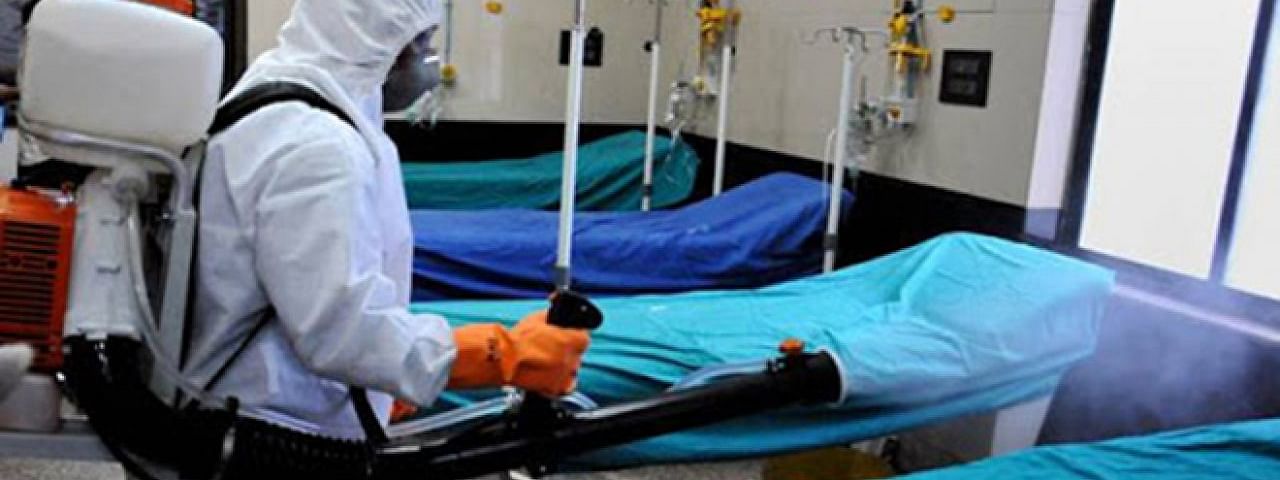Trending Now
- 830 voters names go missing in Kavundampalayam constituency
- If BJP comes to power we shall consider bringing back electoral bonds: Nirmala Sitaraman
- Monitoring at check posts between Kerala and TN intensified as bird flu gets virulent in Kerala
Tamilnadu News
Why COVID Patients Die Between Midnight & 3 am And How TN Doctors Are Addressing This
![]() June 22, 2020
June 22, 2020
About two and half months ago, government doctors in Tamil Nadu wracked their brains over why COVID-19 patients were dying more during the wee hours of the morning.
Deaths were more likely to take place between midnight and 3 am, according to their observation.
The answer, they realised, had everything to do with oxygenation of blood.
And with this realisation came a change in treatment protocol – COVID patients in the state are now being monitored more frequently at night than during daytime.
What Is Oxygen Saturation?
To understand the simplicity of the finding and the response by doctors, a Biology 101 session is in order. We promise not to make it too boring, so read on.
“All tissues and cells will work only if there is oxygen and glucose. Glucose is for energy, oxygen converts it and takes it to all the cells,” explained Dr Paranthaman, Professor of Medicine at Kilpauk Medical College and Hospital, a critical care expert of over two decades who also plays an advisory role to the state’s expert panel on COVID-19.
“Oxygen is carried through haemoglobin. Oxygenation takes place in the lung and this supplies oxygen through blood to the cells. Blood also carries glucose to the cells.”
Glucose is broken down to yield energy within the cells of the body. For this process to take place, oxygen is a must.
So what does oxygen saturation of blood mean?
This is the capacity of the haemoglobin to carry oxygen.
“Sometimes if we have less haemoglobin (less than 13 grams), even though the lungs are giving more oxygen from the environment, it is not carried to all the cells. This means the vehicle is not there. The minimum requirement is 13 grams of haemoglobin. For instance, in the case of anaemic patients who have low haemoglobin, if say the haemoglobin is at 6 grams, the oxygen carrying capacity will be much less than in those with 13 grams,” explained Dr Paranthaman.
But in COVID patients, the problem is the reverse. Since the virus attacks the lungs and reduces oxygen intake, even sufficient haemoglobin cannot ensure that enough oxygen is carried to all cells in the body.
“Haemoglobin may be of sufficient capacity in the patient – say 13 or 15 grams. But the oxygenation from the lung is not happening. In this situation, the vehicle is available but the lung is not able to supply adequate oxygen,” said Dr Paranthaman.
If the haemoglobin carries the normal amount oxygen, it is termed to be 100% saturation.
“In COVID patients, haemoglobin is normal but because of lung involvement, it is not able to transfer sufficient oxygen to the haemoglobin. So in spite of sufficient haemoglobin, the oxygen supply to cells is less.
The minimum requirement for saturation is 85%. Upto 92%, patients will be able to manage on their own. But if saturation goes below 90%, the patients can only manage if they are completely rested, without any activity. Only then will the 90% saturation be able to maintain the oxygen requirement of all the cells,” he added.
The Night Rhythm
While the body has a rhythm during daytime, at night, this changes.
What doctors call the sympathetic tone, is reduced during sleep.
And this is why death in COVID patients frequently occurs between midnight and 3 am.
“Sympathetic tone is a combination of factors – for example heart rate which is 78, will go down during sleep; respiratory rate which is 20 will go down to 15. This is the normal physiological process. If this does not happen, you cannot sleep. For instance, if you are given a shot of adrenaline, you will not be able to sleep. Similarly, if you are tense over an exam, the adrenaline in your body is high and the sympathetic tone becomes high – you are unable to sleep,” explained Dr Paranthaman.
“In COVID patients, the oxygen rate is already reduced. During sleep, there is a further decrease in heart rate, respiratory rate due to the natural physiological phenomena. This is what critical patients are unable to tolerate. Fall in saturation, fall in sympathetic tone results in hypoxia (low oxygen saturation) and that is what results in more deaths during night time than in the day time. This is what we have observed in our ICUs,” said Dr Paranthaman.
“When we are awake, all our automatic receptors are kept in an alert state,” elaborated Dr Elangovan, retired Professor of Medicine, Madras Medical College. “Whenever there is a reduction in the oxygen level in the blood – called hypoxia – the chemo receptors get activated and they send messages to the brain to ventilate more. So the lung balloons get inflated more with inspiratory air and oxygen is rectified. This natural spontaneous alert system is not active during sleep. That is why COVID patients feel more dyspnea (shortness of breath) in the night,” he said.
Dr Elangovan stated that this seemingly small observation had been recognised by Tamil Nadu’s doctors as an important finding, leading to a change in treatment protocol.
“This has been observed world over but the importance of this small observation has been picked up and addressed only by Tamil Nadu’s doctors,” he said.
Now that they had made the observation, how did the doctors address this?
They simply monitored patients much more frequently at night when saturation was likely to drop suddenly.
“During night time, we give more oxygen to patients. We also ensure there is frequent monitoring of oxygen saturation in the night. During the day we monitor saturation once in four hours. But at night, we monitor once every two hours or one hour. If a drop is seen, we wake the patient up and provide necessary support,” he said.
Dr Paranthaman says that the finding is entirely anecdotal and they have not had the time to conduct randomised clinical trials to prove the efficacy of this method.
The Importance Of Inactivity
Another important finding, according to Tamil Nadu’s doctors is the stress on patients not exerting themselves.
This too goes back to the question of oxygen saturation.
Activity needs energy and when COVID patients, whose lungs are affected, attempt to engage in activity, the body tries to increase the saturation of oxygen in the blood. Pressure is put on the lungs to supply more oxygen, which it is unable to do, and saturation levels drop rapidly as a result.
“Even if the patient just goes to the restroom, this activity requires more energy, the lung is unable to supply this oxygen and they will suddenly de-saturate. From 85% it will go to 70% and from there it will drop to 40%. And anybody whose saturation drops to 40% will go into bradycardia or decrease in heart rate. This leads to cardiac arrest,” said Dr Paranthaman.
“You would have heard a lot of cases where people will say – the patient was doing very well but went to the restroom and collapsed there suddenly. Or the patient ate well but suddenly collapsed.
Eating is also activity, you see. If you have a full stomach, it needs to be digested. That is also a form of activity. It is not necessary that you should go for a jog. Even having excess food comprises excess activity.
Even excessive talking comprises excess activity.
Heavy meals, excess talking and using the restroom are three activities to be avoided,” he explained.
In order to ensure that COVID patients do not put additional stress on their digestive system which could lead to de-saturation, a mild laxative and a stool softener is prescribed.
“This is used in cases of myocardial infarction (heart attack) – patient is given a bedpan and even if the patient says he/she can go to the restroom, we insist that they use the bedpan. You have to treat COVID like a myocardial infarction. That is a heart attack, this is a lung attack.
We have been doing this since the past two and a half months and the results are very promising,” he said.
These protocols are being observed and developed by a team of doctors at the Kilpauk Medical College and Hospital under Dean Professor Vasanthamani in conjunction with doctors from the Madras Medical College and Hospital.
An expert team of virologists and public health specialists are also advising the Tamil Nadu government on COVID-19 strategy in terms of containment and policy.
























